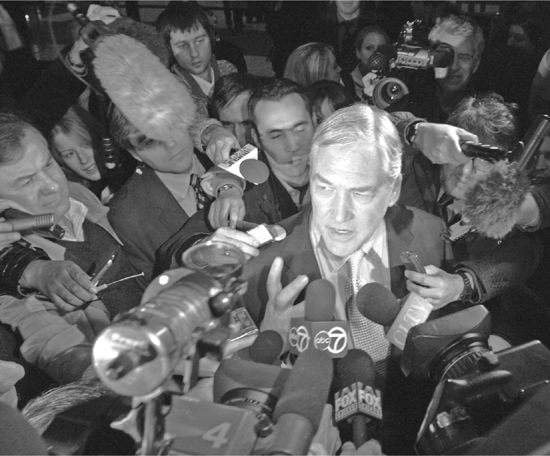
Hundreds of journalists were present when I appeared in November 2005 and entered a plea of not guilty. Some journalists still expected me to flee the jurisdiction, which was never considered. I was under no illusions about the odds against me and the fact that U.S. prosecutors won more than 90 per cent of their cases. But there was no alternative to fighting it out to the end, especially as I was not guilty. (photo credit 3.1)

The trial judge, Amy J. St. Eve, was extremely courteous and very efficient. There was never any apparent repercussion for the many occasions on which the prosecutors made untruthful assertions. I think that she actually believed that I was guilty of something, at least almost until resentencing. She wished me well after reducing the sentence by three years and remitting over $6 million (including interest). But I don’t think she grasps how innately unfair the system is and how many people it unjustly grinds to powder. At sentencing and resentencing, as she sent me to prison, she smiled as she stated that she did “not believe vocational training will be necessary.” On the bench, any sense of humour is better than none. (photo credit 3.2)
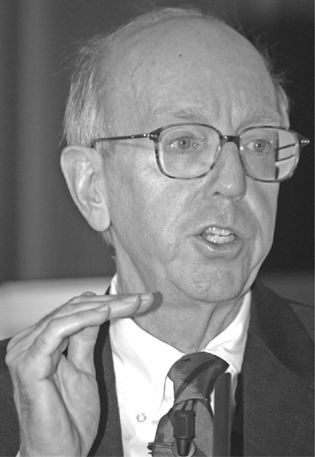
Richard Posner is an inveterate seeker of publicity and lover of controversy, and has described himself as “callous” and “cruel.” In both our hearings he was querulous, abrasive, and extremely insulting, and his judgments were extremely unrigorous and the first was so described by the Supreme Court. Though I have never seen him in person, he is one of the most obnoxious people I have ever encountered. (photo credit 3.3)

Former U.S. ambassador to the United Kingdom Raymond Seitz (left), whom I recruited as a director and Special Committee member, and the committee counsel, former SEC chairman Richard Breeden. (photo credit 3.4)
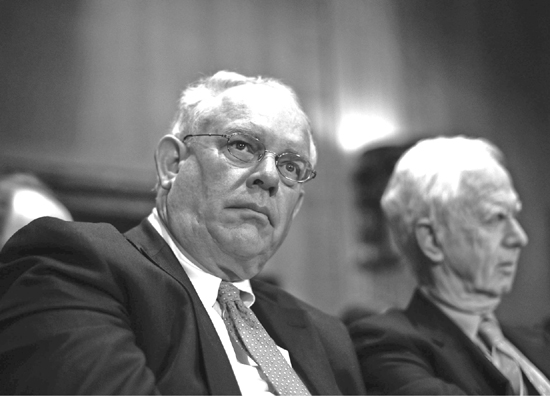
Richard Breeden accused me in 2004 of leading a “$500-million corporate kleptocracy.” (photo credit 3.5)

Mark Kipnis, legal vice president of our American company, was overworked and not a specialist in asset sales, but was ultimately acquitted, after we took the whole case to the U.S. Supreme Court. He is an honest and fine and brave man, and it is shameful that he was ever accused of anything illegal. I spent pleasant moments at the trial speaking with his mother, who sat with my wife and daughter. (photo credit 3.6)

Jack Boultbee was one of Canada’s greatest tax experts in a leading accounting firm before joining us as group financial vice president. He is an eccentric, brilliant, and delightful man who never flinched and contemptuously dismissed all attempts at intimidation. (photo credit 3.8)

I encountered Peter Atkinson for the first time in two years in the lock-up, where the accused are processed. He was badly ground down by our legal problems, but is an absolutely honest man and capable lawyer. (photo credit 3.7)

David Radler, my associate of thirty-five years, who cut a deal for a sweetheart sentence in exchange for testifying against the rest of us. We were never close personally, but his behaviour was the greatest personal disappointment I have ever suffered, as pathetic as it was contemptible. (photo credit 3.9)
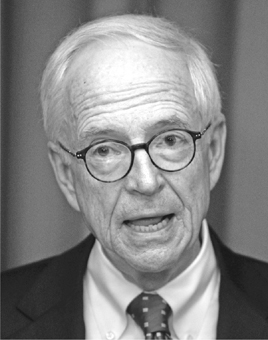
Brendan V. Sullivan, a brilliant lawyer, best known for his defence of Colonel Oliver North in the Iran-Contra affair in 1987, and successor to the legendary Edward Bennett Williams. We got on well, but he was never really engaged with us and withdrew as counsel after the main part of the retainer I had set up for him was improperly seized in an ex parte proceeding and a “mistaken” FBI affidavit, although I assured him he would be paid soon from another source. Leading American lawyers are very expensive and require to be paid in advance. (photo credit 3.10)
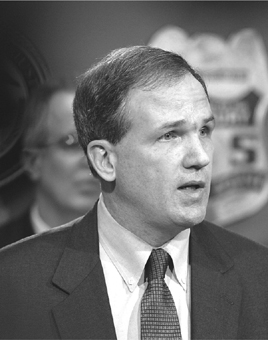
The U.S. Attorney in Chicago, Patrick Fitzgerald. We never met, though he attended the more critical days of our trial. He held frequent inflammatory press conferences, poisoning public (and jury pool) opinion in the manner that is routine in the U.S., which would lead to instant mistrials in Britain and Canada. I believe him to be a zealous fanatic and a threat to justice by any civilized definition, rather than an upholder of it. It was an honour to engineer the voiding of the Honest Services statute that he and other prosecutors had used as a catchment for anyone they targeted. (photo credit 3.12)

Left to right: The prosecutors in our case, assistant U.S. attorneys Ed Siskel, Julie Ruder, Jeff Cramer, and Eric Sussman. Siskel was reasonably inoffensive. (photo credit 3.11)

Photographs of me taken at the time I surrendered to custody in March 2008. Though the day of my imprisonment (March 3) began as the worst moment of my life, I soon saw that prison would be survivable, though Spartan, and felt my fortunes, which had plunged so deeply, had begun to recover. So they had.
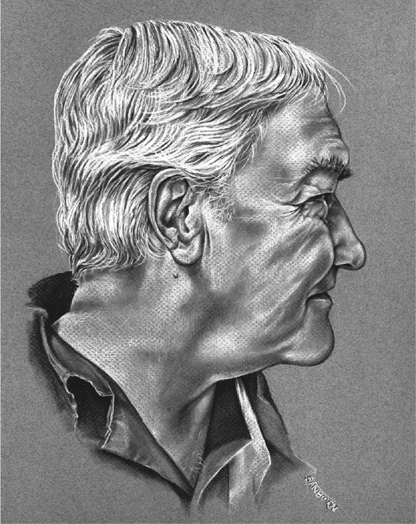
A sketch of me by a fellow prisoner in the middle of my sentence. There was an immense amount of talent among the prisoners, in all arts and crafts as well as electrical, mechanical, and other trades.

At Coleman Low Security Prison with three inmate friends, Jacques (left), a colourful French Canadian who taught me a rudimentary knowledge of the piano and was a gourmet cook; Tony (centre), an Ecuadorian “exporter” to Russia (both were released while I was in prison); and Jackie, a Colombian in the clothing business. They were memorable characters and I would be happy to see them again.

Granted bail: leaving Coleman Federal Correctional Facility, July 21, 2010. (photo credit 3.16)
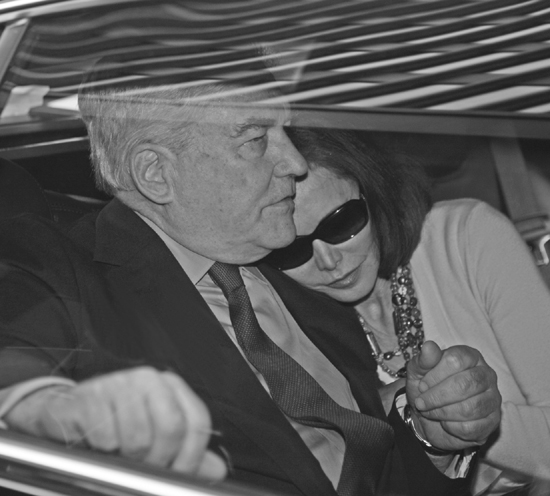
Here, Barbara was still recovering from a fainting spell on mishearing the resentencing on June 24, 2011. Though it was nonsense, we weren’t surprised by the seven-and-a-half-month sentence, as a fig leaf for the whole misconceived prosecution. We detested the Chicago courthouse as a palace of corruption and hypocrisy and were happy to depart it for the last time. (photo credit 3.17)